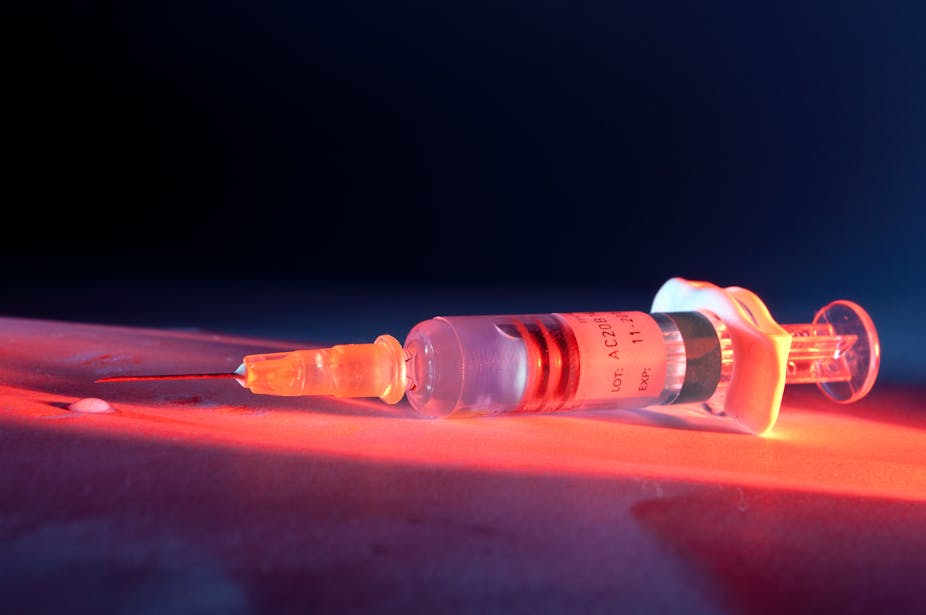In terms of its narrative structure, the recent crime commission report on drugs in sport clearly owes a debt to Cluedo. The popular board game opens with a heinous crime: a murder has been committed. The aim is to determine the location of the crime, the murder weapon, and of course, the identity of the killer. When it comes to the ACC report, the reader is left to wonder: which athletes, which clubs, and which sports?
The widespread media coverage generated by the report is in itself surprising, since most of the allegations have been in the public domain for several years. For example, a 2009 survey my colleagues and I conducted regarding public opinion about drugs in sport, found that the Australian public estimated that about 26% of elite athletes used performance enhancing drugs.
In a subsequent survey of elite athletes, the use of performance enhancing drugs was estimated at 19%. In that study, elite AFL players estimated that within their own sport the incidence rate was just under 4%, and elite rugby union players put the figure at about 9%. News that doping happens in Australia is hardly news.
The absence of any specific accusations in the report has already generated considerable unrest, with numerous calls for the naming and shaming of offenders.
While some of the accused will publicly identify themselves, legal constraints acknowledged by the ACC mean that calls for disclosure will go unheeded by investigators. This means the report is in reality more akin to a press release (complete with colourful stock pictures) than a summary of a criminal investigation.
Investigators are not usually in the habit of forewarning suspects that they are under investigation. So one can either conclude that the investigation has stalled, and this is an attempt to generate new leads in the form of testimony and confessions, or that the evidence secured to date is sufficient and that charges will soon follow.
If the latter, then why the press release? One logical answer is that the scale of the charges will invite disbelief and the public (and possibly jurors) will need some convincing. Jeff Benedict’s research in the USA, shows that sporting clubs and the public are often willing to accept criminal behaviour by sports stars. The ACC report may be the first step in a public relations campaign to ensure convictions. Another possible answer is that the ACC investigations justify the new methods of investigating crime in sport that were recently announced.
The recent USADA report on Lance Armstrong highlighted the “Code of Silence” that pervaded cycling, protecting Armstrong and other doping athletes. The use of silence, in the form of not answering the questions of an investigator, has until relatively recently, been enshrined in common law in Australia.
These rights, collectively referred to as the “right to silence” (including the right to avoid self-incrimination), are intended to safeguard the rights of the suspect. In the United Kingdom in 1994 the law on the right to silence was changed, allowing adverse inferences to be drawn from a failure to answer police questions. To safeguard the rights of suspects, legal advice was made available by the state. In Australia, the Australian Crime Commission has coercive powers whereby a person can be compelled to answer questions (but without the provision of legal advice). The use of such powers has considerable oversight, including a need for approval by the ACC Board.
In sport, the standard answer to accusations of doping was, according to Canadian sprinter Angella Issajenko, “You deny, you deny, you deny”. Issajenko finally admitted her own history of doping at the inquiry into doping by sprinter Ben Johnson. She said:
If the inquiry hadn’t been called, we’d be denying to this day. But once the inquiry was called, I knew we’d have to come out with the truth. It was over.
The need for anti-doping investigations to adopt police investigative protocols was recently advocated by the World Anti-Doping Agency.
In their response to the ACC report, Minister for Justice Jason Clare and Minister for Sport Kate Lundy detailed new legislation to strengthen the Australian Sports Anti-Doping Authority’s (ASADA) investigative powers, including powers to coerce testimony.
Research has shown that legislative powers to coerce testimony are of little use if the investigators do not ask the right questions. Over the past 20 years we have worked with police forces to develop investigative interviewing techniques.
Investigators are frequently confident in their abilities to detect deception, but that confidence does not equate to competence. Investigators are prone to self-deception and without appropriate training, errors are possible. These include false negatives, where guilty suspects fail to confess, and false positives, where innocent suspects confess.
But even though the science of investigative interviewing is still in its infancy, the broadening of an investigative approach will undoubtedly improve anti-doping efforts. Doping athletes now have to evade biological detection systems, and they have to lie. The former has always been relatively easy. The latter is a whole new ball game. The cheaters are no longer ahead of the testers. The interrogators have assumed control.

